East West Lifestyle
Recipes of Asia: Lamb Rice Pilaf from Xinjiang
By Clarissa Wei
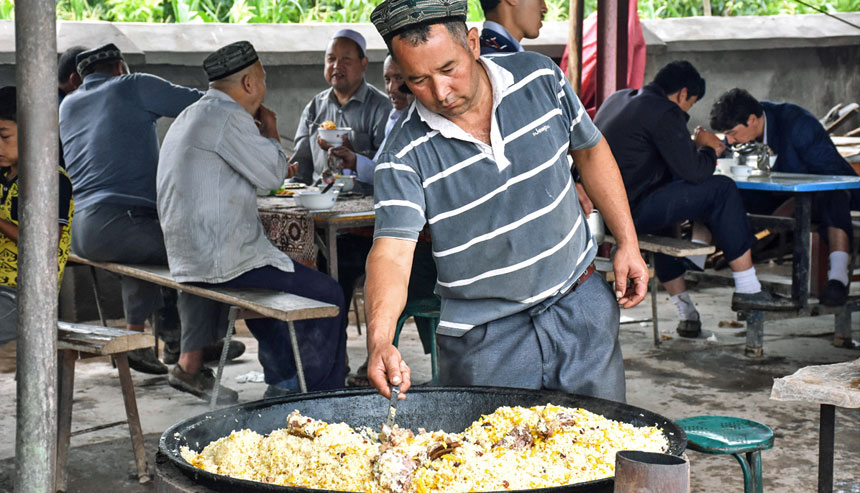
Food Blogger Clarissa Wei lands in the Wild West of China and samples nomadic cuisine.
I feel something tapping my knee. I look up, rub my eyes. It’s early morning; I am lying in a cramped train compartment. Lower bunk; one of our four beds in a small cell in the belly of a roaring train heading to the far west reaches of China. The rickety racket sound of the train on tracks grows louder as I arise from my deep sleep.
I am on my way to the province of Xinjiang. I have been anticipating this for weeks. Xinjiang is the Wild Wild West of China. The population is predominately Uyghur — a Turkic ethnic group far different from the Han Chinese majority of the country. It’s a land with grapevines, deep deserts and nomadic groups that have lived off of the land for centuries.
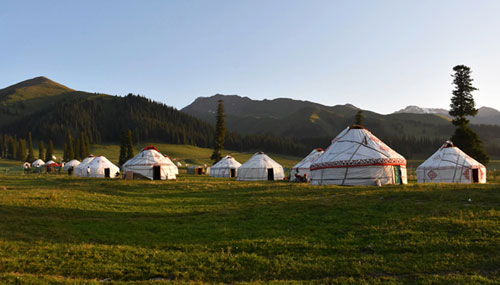
Another tap. I look across from me. A train employee is sitting there at the foot of the bunk across from me. My bunkmate is still sleeping. I look at the employee quizzically. Late 30s, I presume. Han Chinese, dark features, tan skin. He looks boyish in his oversized employee uniform — an ironed down navy blue shirt with gold buttons. What does he want?
“Hey, uh, how do you know English?” he asks me.
At this point, I’ve been asked this question at least a dozen times. People hear me speaking English to my friends and find it odd that I can speak the language without an accent. Slightly annoyed, I give him my usual spiel: I am American. I was born and raised in the States. I am here to write about food and I need to collect a recipe —
“Food? I can take you around,” he says, interrupting me. “I have a family friend who can teach you something.” Quickly, he gives me his number and ducks out of the cabin. I go back to sleep, happy that the interaction is over, confused that it even happened.
Hours later, when my girlfriends and I check in at the hostel in Urumqi and start talking about what we should do in town, I remember the incident and tell them what happened. We decide, because why not, to take up the mysterious train employee on his offer. The next day, we find ourselves in his car, being driven past run-down neighborhoods, off the main roads.
“We could totally be kidnapped right now,” we joke to one another in English, half-kidding.
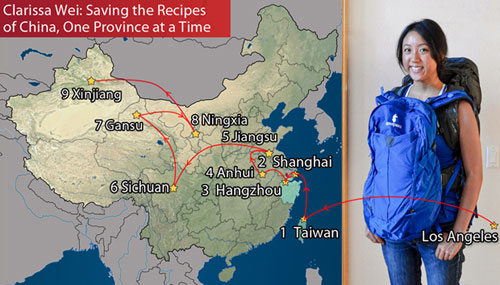
The man ends up being a real sweetheart. He takes us to a neighborhood restaurant owned by a family friend, who makes us a giant plate of lamb pilaf outside. Our impromptu tour guide’s father drops by for a visit, entertained at the sight of three Americans girls. Turns out, he was actually just genuinely curious about me – a Chinese-looking girl from America. It’s not often he encounters foreigners who can speak Chinese, and he wanted to get to know my friends and me for a bit.
In Xinjiang, the pilaf is cooked outdoors in a large pan. It’s always made in large portions, with handfuls of mutton. Lamb is often the protein of choice; many people in Xinjiang are Muslim and don’t eat pork. The key is to buy fat chunks of mutton. The more fat there is, the more flavorful the dish will be.
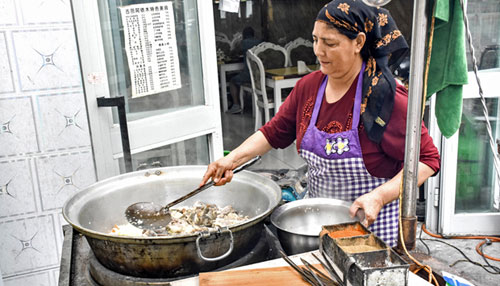
"The highlight of Xinjiang wasn’t so much the food as it was the abundant hospitality of the people of the province."
I’ll admit: the highlight of Xinjiang wasn’t so much the food as it was the abundant hospitality of the people of the province. My friends and I encountered wonderful souls throughout our time there that took us out to lunch and dinner. This guy was just one of many.
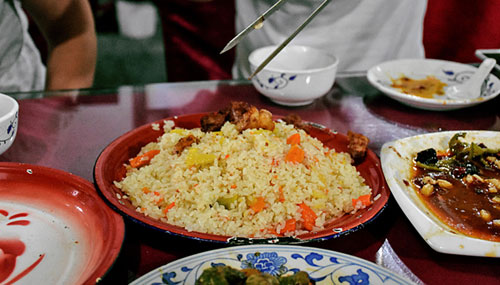
I’ve scaled down the recipe for the home cook:
Lamb Rice Pilaf
Cooking time: 1 hour
Servings: 4
Ingredients:- 1 lb. fresh mutton
- 3 carrots, yellow and orange, chopped
- 1 onion, chopped
- 3 cups long-grain basmati white rice, washed and soaked the night before
- 2 tsp salt
- 3 tsp cumin
- 2 tsp rock sugar, crushed
- ¼ cup cooking oil or less
- 4 cups warm water
- Chop the mutton into small pieces, about one-inch square.
- In a wok, turn the heat to high. Add in the oil. Wait until it gets hot.
- Add in the mutton, cumin, onions, and carrots, until the mutton is about half cooked.
- Dissolve the salt and sugar into the 4 cups of warm water and then add to the wok.
- Add in the rice and stir.
- Put a lid on the wok. Simmer for about 40 minutes without stirring.
- Garnish with chopped green onions.
- Serve.
Subscribe to the Reach Further Newsletter
Get inspiring stories in your inbox every month.

